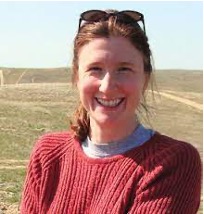 Shannon Ehlers, M.S.
Shannon Ehlers, M.S.
Wildlife Biologist/Ecologist
Kootenai Tribe of Idaho
Since graduating with a M.S. in Biology from the University of Akron in 2005, I have worked in 14 different states, predominately as a wildlife technician for various state agencies and non-profit organizations. In one year alone, I conducted avian surveys or operated banding stations in Missouri, Idaho, Virginia, Alaska, and Alabama.
In the last 10 years, I started managing large-scale or long-term research projects as a way to work in one location and advance within my profession. The trade-off of working in one location for a long-term position is I spend more time in the office and less time in the field.
I have long been interested in birds, amphibians, gastropods, whole ecosystems and landscapes; thus I have often worked within the non-game or diversity programs in a state agency, or for taxon-specific non-profit organizations (e.g., Idaho Bird Observatory). These programs are generally poorly funded as they do not have access to Pitman-Roberts funds or state fishing and hunting license sales rather are funded through State Wildlife Grants (SWG), sales taxes, mitigation funds, or Section 8 (ESA) funding. As funding is limited to work with non-game wildlife, many of the projects I have worked on involve threatened or endangered (T&E) species or species of greatest conservation need (SGCN). Most of the SGCN work involves obtaining occurrence data as one of the reasons a species is listed is due to a lack of information about the species. When working with T&E species, much of the work involves obtaining evidence to delist that species or to ensure that management actions are not having a detrimental effect on the listed species.
In my current position as a Wildlife Biologist for a tribal organization, the focus of the research projects has shifted. The funding for the tribal wildlife program is mitigation funds from the construction and operation of a hydropower dam that completed altered the function of the riparian and floodplain ecosystem that the tribe relied on for subsistence. The funds have been used to obtain floodplain property and restore riparian/floodplain habitats. Additionally, the tribe collaborates with private, federal and state landowners to restore riparian/floodplain habitat. Since my arrival two years ago, I have worked on developing monitoring projects to measure the effectiveness of the restoration activities. Understanding that we will never have a floodplain like it was 100 years ago, we restore habitat to maintain the current biodiversity while providing connecting habitat to remnant patches.
I suspect I do not have the typical career path of a “Wildlife Biologist.” … I actually do not have a “wildlife” degree. Both of my degrees were Biology degrees and I never took a wildlife management course. Additionally, I like to travel and reside in beautiful places. When I first earned my Master’s degree, I applied for permanent professional jobs and rarely received an interview. At the time, I figured it was my inexperience … but I also think I may have sabotaged myself because I wanted to see new things.
Looking back on the past 20 years, I would not change my path and sincerely believe that my experience in different places with different people makes me a better wildlife biologist.